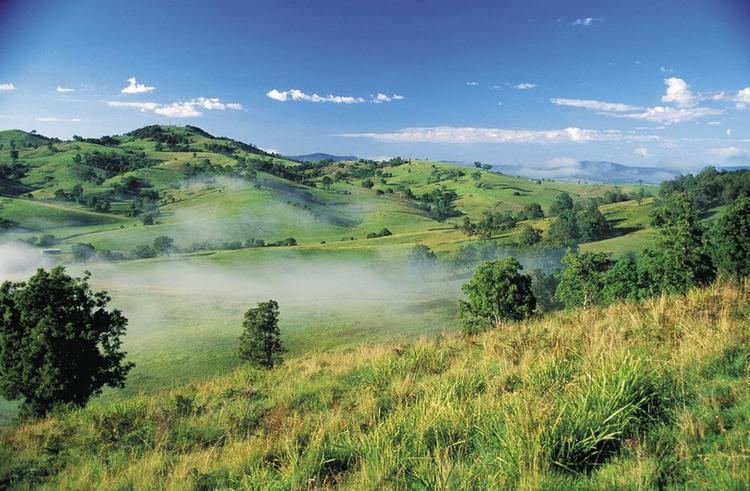Population 4,537 (2006 census) Postcode(s) 2550 Local time Thursday 8:56 AM | Established 1851 Elevation 50 m (164 ft) Postal code 2550 | |
 | ||
Weather 21°C, Wind NW at 5 km/h, 86% Humidity Points of interest Biamanga National Park, Mimosa Rocks National, Bournda National Park, Bega Pioneers' Museum, Bega Valley Regional | ||
Bega is a town in the south-east of New South Wales, Australia in the Bega Valley Shire. It is the economic centre for the Bega Valley.
Contents
Map of Bega NSW 2550, Australia
Place name
One claim is that place name Bega is derived from the local Aboriginal word meaning "big camping ground". Another claim is that it is a corruption of the Aboriginal word "Bika" meaning "beautiful".
History and description
The Bega region was used by the Yuin-Monaro tribal grouping of Aborigines for thousands of years before Europeans arrived in the area. The first European to come near the area was George Bass, who explored the coastline in 1797 as part of his broader explorations of the Australian coast. William Tarlinton was the first European to explore the area on foot, arriving in 1829. He returned in the early 1830s and settled there, starting a cattle farm. Others who arrived in the area around the same time were the Imlay brothers, who also began farming there. Their name has since been preserved in the form of Mount Imlay National Park. Live cattle were transported to Sydney for a time, to be supplemented by tallow and hides in the early 1840s. Beef and dairy farming were carried on in the area through the 1840s, and many towns were surveyed in the 1850s.
The town of Bega itself was laid out and gazetted in 1851. Located to the north of its present location, repeated flooding later resulted in its relocation to the higher ground south of the river. Dairy farming expanded in the region quickly throughout the 1860s, overtaking cattle farming as the predominant industry. In 1858, Tathra was used as a port for the transport of products to Sydney, and the Illawarra Steam Company was established. In 1860, Tathra Wharf was constructed, which allowed for the further growth and expansion of the dairy industry.
The region received a further boost in the late 1870s when gold was discovered in the Bermagui area. The Bermagui gold rush followed quickly in 1880. Two years later, in 1882, the Municipality of Bega was created. The Bega Dairy Cooperative Limited was set up in the late 1890s.
Bega is now well known for its cheese. Bega Cheese is manufactured by The Bega Co-operative Society Limited which is one of the larger Australian cheese companies. Their products are exported around the world and distributed across Australia and are available in most supermarkets and general stores. The brand is owned by Fonterra.
Notable local landmarks are Bega Court House and Rosevear Jeweller's shopfront, which are both listed on the Register of the National Estate. The court house was built in 1881 and consists of rendered brick and iron roofs. The Rosevear shop is in Carp Street and was established circa 1899. It is listed as a notable example of Victorian commercial designers.
After years of planning, the shopping mall in Bega was built. The Sapphire Marketplace [1] was opened on 2 December 2011.
Climate
Bega has an oceanic climate (Cfb).
